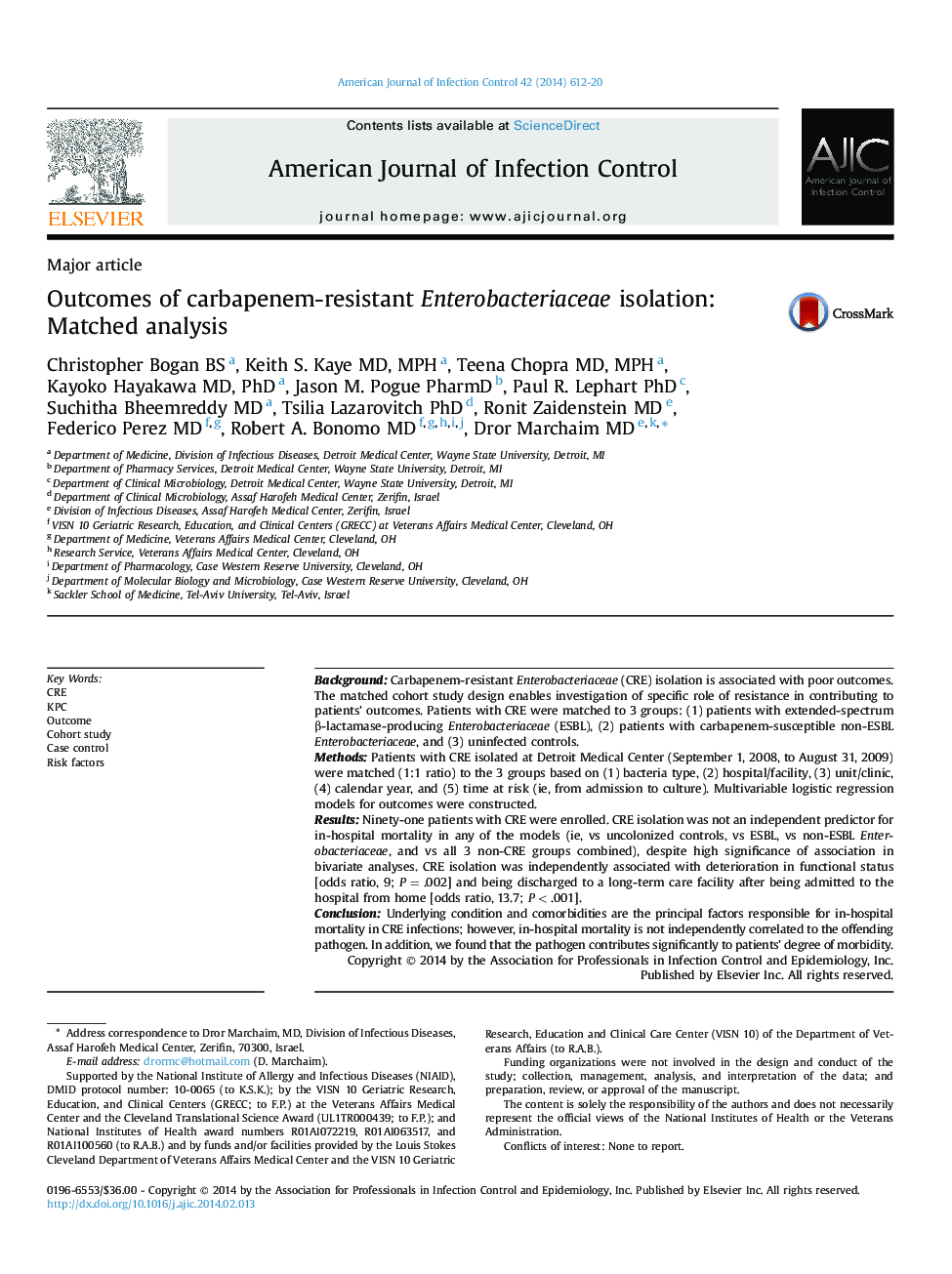| Article ID | Journal | Published Year | Pages | File Type |
|---|---|---|---|---|
| 2638189 | American Journal of Infection Control | 2014 | 9 Pages |
BackgroundCarbapenem-resistant Enterobacteriaceae (CRE) isolation is associated with poor outcomes. The matched cohort study design enables investigation of specific role of resistance in contributing to patients' outcomes. Patients with CRE were matched to 3 groups: (1) patients with extended-spectrum β-lactamase-producing Enterobacteriaceae (ESBL), (2) patients with carbapenem-susceptible non-ESBL Enterobacteriaceae, and (3) uninfected controls.MethodsPatients with CRE isolated at Detroit Medical Center (September 1, 2008, to August 31, 2009) were matched (1:1 ratio) to the 3 groups based on (1) bacteria type, (2) hospital/facility, (3) unit/clinic, (4) calendar year, and (5) time at risk (ie, from admission to culture). Multivariable logistic regression models for outcomes were constructed.ResultsNinety-one patients with CRE were enrolled. CRE isolation was not an independent predictor for in-hospital mortality in any of the models (ie, vs uncolonized controls, vs ESBL, vs non-ESBL Enterobacteriaceae, and vs all 3 non-CRE groups combined), despite high significance of association in bivariate analyses. CRE isolation was independently associated with deterioration in functional status [odds ratio, 9; P = .002] and being discharged to a long-term care facility after being admitted to the hospital from home [odds ratio, 13.7; P < .001].ConclusionUnderlying condition and comorbidities are the principal factors responsible for in-hospital mortality in CRE infections; however, in-hospital mortality is not independently correlated to the offending pathogen. In addition, we found that the pathogen contributes significantly to patients' degree of morbidity.
